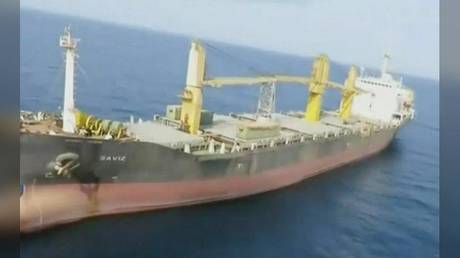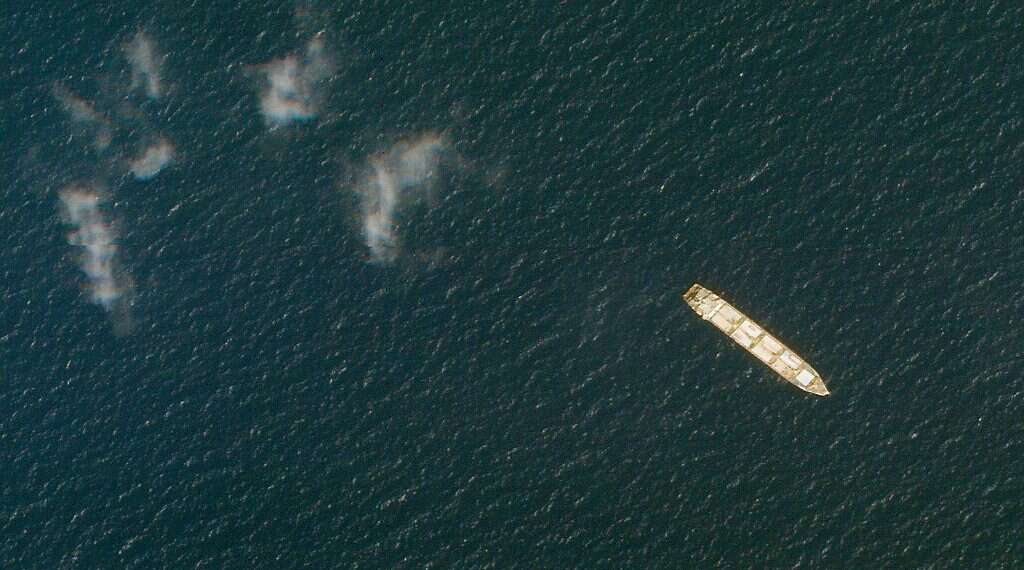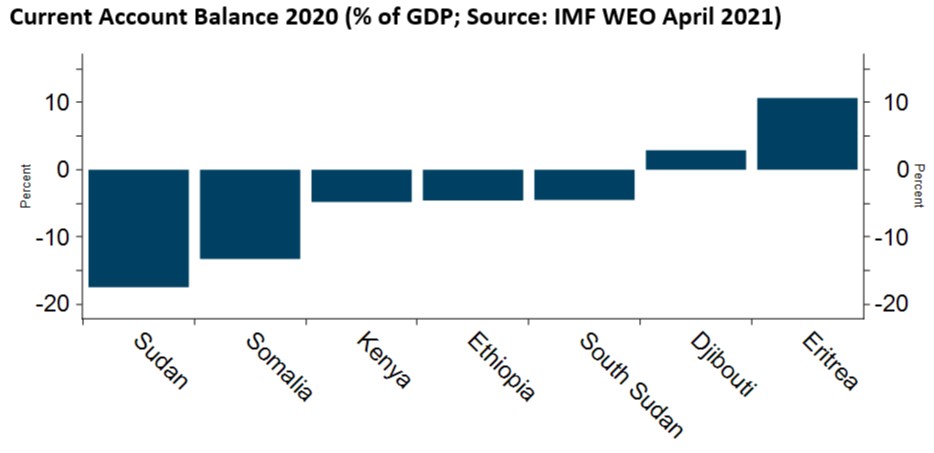
Iranian ‘spy ship’ damaged in ‘attack’ along major Red Sea shipping route – reports
https://www.rt.com/news/520303-iran-shi ... el-attack/
6 Apr, 2021

The Iranian ship Saviz (file photo) was reportedly attacked in the Red Sea, April 6, 2021 © Twitter/screenshot
An Iranian ship that Israel and Saudi Arabia have accused of acting as a base for Islamic Revolutionary Guard Corps forces has been damaged, reportedly by a mine, in the Red Sea waters between Yemen and Eritrea.
State-owned Saudi broadcaster Al-Hadath TV reported the attack on Tuesday, citing an unnamed source calling it a “likely” Israeli operation off the coast of Eritrea. An anonymous US official later told https://www.nytimes.com/2021/04/06/worl ... ttack.html the New York Times that Tel Aviv was behind the attack, and had informed Washington of the op early on Tuesday morning. He said the Israelis dubbed the assault
The vessel was identified as the Saviz, which Israel and Saudi Arabia have long accused of being a “forward base” for the IRGC in the area.retaliation for earlier Iranian strikes on Israeli vessels.
Some Israeli accounts mentioned a “torpedo” that damaged the vessel. The semi-official Iranian news agency Tasnim confirmed https://www.tasnimnews.com/fa/news/1400 ... 8%B1%D8%AE that there had been an attack, describing it as
The Saviz[limpet] mines placed on the hull of the ship.
Tasnim reported, noting that official Tehran has not issued a statement yet.has been stationed in the Red Sea for the past few years to support Iranian commandos who are sent to escort commercial vessels,
According to the US Naval Institute, https://news.usni.org/2020/10/26/irania ... -oil-route the Saviz had “barely moved” for the past three years, and is suspected of providing surveillance of maritime traffic coming through the Red Sea. This is a major shipping route from Asia and the Middle East to Europe, via the Suez Canal that was recently blocked by the stuck container ship Ever Given.
Many world navies have maintained a presence in the area, as it has been one of the favorite hunting grounds for pirates operating from the anarchy-stricken parts of Somalia.
Tuesday’s incident comes as Iranian diplomats met with Russian, Chinese, German, French and British envoys in Vienna to discuss the fate of the 2015 nuclear deal. The US was absent from the meeting, even though the Biden administration has hinted at rejoining the deal the Trump administration unilaterally repudiated in 2018.
The alleged attack on the Saviz also comes amid a “shadow war” on the high seas between Israel and Iran over the past several years that has ramped up in recent months. The Iranian cargo vessel Shahr-e Kord was damaged in the Mediterranean in mid-March. Two weeks ago, Israeli freighter Lori was reportedly hit by a missile in the Arabian sea as it was sailing from Tanzania to India. In late February, the Israeli-owned vessel Helios Ray suffered an explosion in the Gulf of Oman. Both Tehran and Tel Aviv have accused each other of the attacks, and denied any responsibility for them.
An investigation by the liberal Israeli newspaper Haaretz in March claimed https://archive.is/oxdTj that Israel and Iran have been involved in “economic warfare” for the past two and a half years, with Tel Aviv inflicting “billions of dollars” in damage on Tehran by attacking “several dozen” oil tankers.
__________________

Report: Israel confirms striking IRGC-linked spy ship in Red Sea
American and Arab media cite "senior Israeli sources" as saying the Iranian-flagged Saviz was attacked "in retaliation for earlier Iranian strikes on Israeli vessels." Iran: Incident under investigation.
By Daniel Siryoti, Neta Bar, News Agencies and ILH Staff
https://www.israelhayom.com/2021/04/07/ ... n-red-sea/
04-07-2021

The Iranian-flagged Saviz in the Red Sea off the coast of Yemen | Photo: AP via Planet Labs Inc
Israel informed the United States it stuck Saviz, https://www.israelhayom.com/2021/04/06/ ... n-red-sea/ an Iranian-flagged ship, in the Red Sea on Tuesday, Saudi news network Al Arabiya reported on Wednesday, citing a report in The New York Times. The attack reportedly came in retaliation for earlier Iranian strikes on Israeli vessels, as the maritime shadow war between the Jewish state and the Islamic republic has been slowly coming to light.
The Saviz, long known to the international intelligence community as a spy shio operated by Iran's powerful Revolutionary Guard Corps, was attacked in the Red Sea by limpet mines attached to the hull, Iranian media reported.
the Tasnim news agency said.The vessel Iran Saviz has been stationed in the Red Sea for the past few years to support Iranian commandos sent on a commercial vessel (anti-piracy) escort missions,
The New York Times cites an unnamed American official as saying Israel has informed the US that it had, indeed, struck Saviz.
the report noted.The Israelis had called the attack a retaliation for earlier Iranian strikes on Israeli vessels, and that the Saviz had been damaged below the waterline,
According to Al Arabiya, the Saviz is officially listed as a general cargo vessel. However, the Combating Terrorism Center at the United States Military Academy described the 'Saviz' in a report as the
It said:Iranian mother ship on station located in Eritrea's contiguous waters.
Iran's Foreign Ministry confirmed Wednesday that the Saviz had been targeted in the Red Sea.The ship has signals intelligence domes and antennae. It is visited by all Iranian ships moving through the Red Sea, nominally to coordinate anti-piracy measures. At least three speedboats are based on deck, which are used to ferry personnel to Yemen.
Foreign Ministry spokesman Saeed Khatibzadeh said, adding the incidentThe explosion occurred on Tuesday morning near the Djibouti coast and caused minor damage with no casualties. The vessel was a civilian ship stationed there to secure the region against pirates,
is under investigation.















